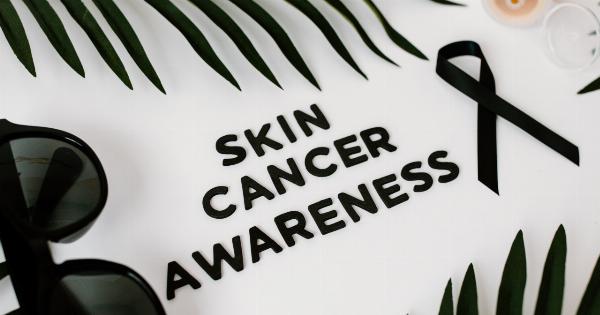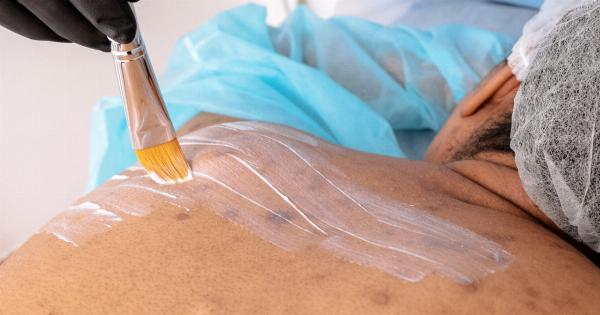Chickenpox, medically known as varicella, is a highly contagious viral infection caused by the varicella-zoster virus (VZV). It primarily affects children, but adults can also contract the disease.
While chickenpox is usually harmless and resolves on its own, it can leave behind unsightly scars on the skin. These scars can cause self-consciousness and be a source of discomfort for many individuals. Fortunately, there are several ways to minimize chickenpox scars and improve the appearance of the skin.
In this article, we will explore some effective treatments and techniques for dealing with chickenpox scars.
1. Early Initiation of Treatment
The first step in minimizing chickenpox scars is to seek treatment as early as possible. Since chickenpox is a viral infection, it is important to consult a healthcare professional for appropriate antiviral medications.
Early treatment can help reduce the severity and duration of the infection, minimizing the chances of developing deep scars. It is crucial to follow the prescribed treatment plan and take the prescribed medications for the specified duration to achieve the best results.
2. Gentle Cleansing and Moisturizing
After the infection has subsided, it is important to take care of the affected skin to promote healing and minimize scarring. Gentle cleansing with mild soap and lukewarm water can help remove any impurities without irritating the skin further.
Pat the skin dry using a soft towel instead of rubbing vigorously, as friction can aggravate the scars. Applying a moisturizer suitable for your skin type can help keep the skin hydrated and supple, preventing excessive dryness that can contribute to scarring.
3. Avoid Scratching or Picking
One of the most crucial steps in minimizing chickenpox scars is to avoid scratching or picking at the scabs. While the itchiness can be unbearable, scratching can lead to deeper wounds and increase the risk of scarring.
It is important to keep the nails short and clean to prevent any accidental scratching. If needed, consult a healthcare professional for effective itch relief methods or medications to alleviate discomfort and minimize the urge to scratch.
4. Silicone Gel Sheets
Silicone gel sheets are a popular and effective treatment option for minimizing scars, including chickenpox scars. These sheets are made of medical-grade silicone and can be applied directly to the affected areas.
They create a protective barrier that helps flatten and soften the scars over time. Silicone gel sheets are easily available in pharmacies and online, and they are safe and suitable for all skin types. Follow the instructions provided with the product for optimal results.
5. Vitamin E
Vitamin E is a powerful antioxidant known for its ability to promote skin healing and reduce scar formation. Applying vitamin E oil or using creams containing vitamin E to the chickenpox scars can aid in fading them.
It is important to perform a patch test before applying vitamin E directly to the scars, as some individuals may have allergic reactions. If any adverse reactions occur, discontinue use and consult a healthcare professional.
6. Chemical Peels
Chemical peels are a popular cosmetic treatment option for minimizing various types of scars, including chickenpox scars.
During the procedure, a chemical solution is applied to the skin, which causes the top layer to peel off, revealing new, smoother skin underneath. This helps reduce the appearance of scars and can improve overall skin texture. Chemical peels should only be performed by a qualified dermatologist or skincare professional to ensure safety and optimal results.
7. Microdermabrasion
Microdermabrasion is a non-invasive procedure that uses a specialized device to exfoliate the top layer of the skin. This helps remove dead skin cells and stimulates collagen production, promoting skin regeneration and reducing the appearance of scars.
Microdermabrasion can be an effective treatment option for mild chickenpox scars. It is important to consult a professional before undergoing microdermabrasion to determine if it is suitable for your specific skin condition.
8. Laser Therapy
Laser therapy is a more advanced and intensive treatment option for minimizing chickenpox scars. It works by delivering targeted beams of light to the scarred areas, breaking down scar tissue and stimulating collagen production.
Laser therapy can effectively reduce the appearance of deep scars and improve overall skin texture. However, multiple sessions may be required to achieve significant results, and the procedure should only be performed by a qualified dermatologist or skincare professional.
9. Dermal Fillers
Dermal fillers are injectable substances that can help plump up depressed or indented chickenpox scars. The fillers are injected directly into the scars, elevating them to match the surrounding skin level.
This can significantly improve the appearance of the scars and create a smoother skin surface. Dermal fillers are a temporary solution and may need to be repeated periodically to maintain the desired results. Consult a dermatologist to determine if dermal fillers are a suitable option for your specific scars.
10. Professional Scar Treatment Products
There are various scar treatment products available in the market that are specifically designed to reduce the appearance of scars.
These products often contain a combination of ingredients like silicone, vitamin E, aloe vera, and other skin-nourishing compounds. Regular application of these products as directed can help fade chickenpox scars and improve skin texture. It is important to choose products from reputable brands and consult a dermatologist if you have any specific concerns or allergies.
By following these ways to minimize chickenpox scars, you can enhance the appearance of your skin and regain your confidence.
Remember to always consult a healthcare professional or dermatologist for personalized advice and guidance based on your individual needs and skin condition.






























